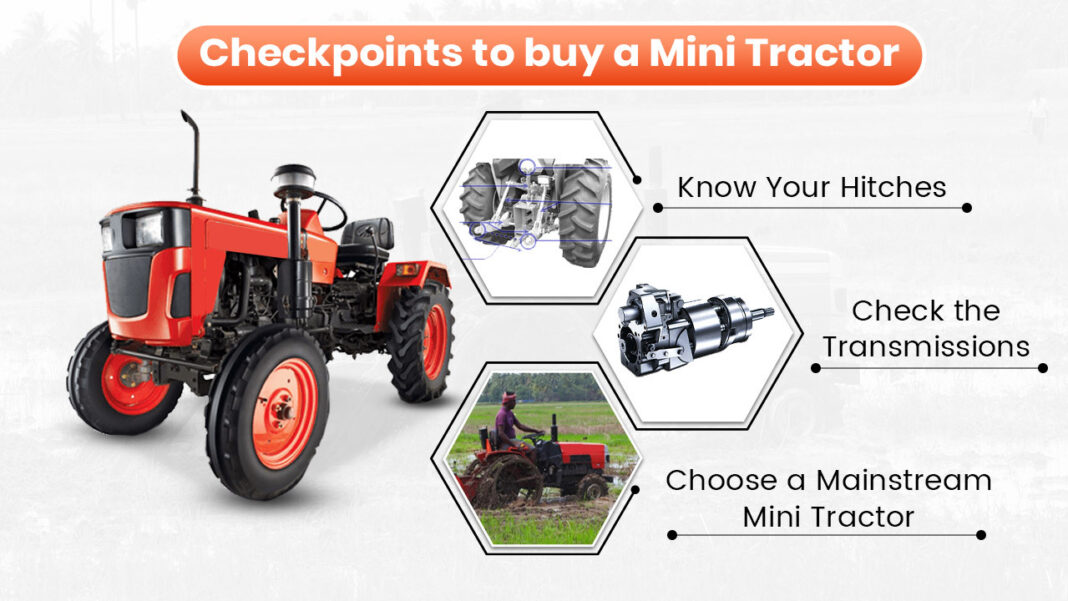If you want to learn more about tractors and their importance in the Indian farming industry, you’ll know that they are undoubtedly one of the most significant capital investments for an average farmer. With the growing trend towards mechanization, tractors have become an essential tool for reducing labour and increasing efficiency. They can be used for various farming activities such as haulage, tillage, and sowing & planting by utilizing a mix of implements. However, with a market flooded with new machines and technologies, buying a tractor can be overwhelming. If you’re looking for information about tractors and need help selecting the right one that fits your needs and budget, this guide is for you. Explore these details and bring home a tractor that meets all your requirements.
It’s all about Power
Horsepower is the first thing that you need to consider before buying a tractor, mini tractor. It determines how fast your machine can run and ultimately impacts its performance. There are multiple factors on which your need for the amount of horsepower depends, including farm size, implements to be used and soil type.
If your farming tasks are limited to ordinary garden activities like ploughing and mowing, 15-20 HP is sufficient. In addition, they are easy to manoeuvre, safe and affordable. These tractors are a boon for small farm sizes. However, if your farming needs are complicated, you will need extra power. You require a tractor of 25-35 HP to use different tools like backhoe attachment, implements and front-end loader. These tractors come with power take-off or PTO to extract power from the main engine.
If you want to achieve a higher number of farming operations, a tractor within the range of 36-50 is suitable for you. These tractors can easily perform a plethora of tasks like ploughing, levelling, transportation, seeding and harvesting. Also, these tractors will make your life easy if you are struggling with hard soil or clay.
A large field entails bigger implements and attracts challenging tasks. A tractor of 51-90 HP can manage such challenges effortlessly. Their lifting and loading capacity is high, and they employ PTO. Lastly, commercial farming demands a tractor that can perform extreme tasks for large-scale farming. A 90-120 HP tractor provides the maximum capability and power. This is why these tractors are the most expensive. A regular farmer may have little use for such powerful tractors.
4WD vs 2WD Tractors
Gone are the days when tractors were only used for ploughing and transportation. Now, you have the freedom to employ a variety of implements like baler, sprayer, harrow and cultivator. If you are confused between choosing a two-wheel drive and a four-wheel drive tractor, we will help you make the right decision. A 2WD tractor is moved by a single axle. These tractors are preferred in dry conditions where the land is not sloppy, slanted or extremely wet. The pros include affordability, low turning radius, and ease to use. However, these tractors suffer from low traction, less fuel efficiency and slippage.
A 4 WD tractor supplies power to all its four wheels, making it more versatile and suitable for complex farming activities. These tractors can use all kinds of implements and have greater fuel efficiency, pulling power, traction and low slippage. Thus, these tractors are the best for harsh conditions. However, you have to pay a little extra to buy them compared to 2WD tractors.
Turning radius
It is one of the most neglected characteristics of a tractor. Most farmers look past this when considering a tractor model. The turning radius determines how much space is needed to turn your tractor in the other direction. If your farm size is small, moving around a tractor with a large turning radius will be challenging. As a thumb of rule, go with the tractor with a low turning radius. It will help you in tight spaces and cutting sharp corners. Tractors with short turning radius can easily circumvent tricky obstacles and move across narrow bends. There is no other thing more important than the mobility of the tractor. When tractors need less space for making a turn, their handling automatically becomes more straightforward. You may have to slip through narrow lanes, manoeuvre in a garage or park in tight conditions. A small turning radius is going to make things easier for you.
Ground Clearance
In simple terms, ground clearance is the distance between the ground and the bottom of the tractor. It would be best to have tractors with high ride heights when working on rocky or rough terrain. It protects the underbelly of your vehicle. Additionally, high ground clearance ensures that tall ground crops such as paddy, chilly, and cotton are not damaged. You will experience a hurdle-free and smooth operation as you can easily drive over any bump on the field. Pay great attention to this factor as it affects how your tractor drives. A farming field can come with any obstacle, including rocks, bushes and heaps of stubble. Therefore, a tractor with high ground clearance is perfect for off-road driving and transporting heavy loads.
Comfort
A large part of your day is going to be spent on your tractor working ardently on the field. It means you must select a tractor that does not take a toll on your body. India is known for its harsh climatic conditions. An AC cabin can easily provide relief and shield against heat and smoke. You need to understand that a comfortable ride results in enhanced productivity. You will not feel the need to take frequent breaks from work. Ensure that all the levers are easily accessible. You must not move around the platform to switch gears. There have been several cases where farmers have complained about back pain after working long hours on tractors. Avoid such mishaps by ensuring your tractors have proper padding on seats. Also, try going with the latest models as they come with the latest technological improvements. Companies have started to pay attention to operator comfort. Some of the highly demanded comfort options in tractors include:
- Adjustable seat
- Power steering
- 4WD
- Dual PTO
- Oil-immersed disc brakes








